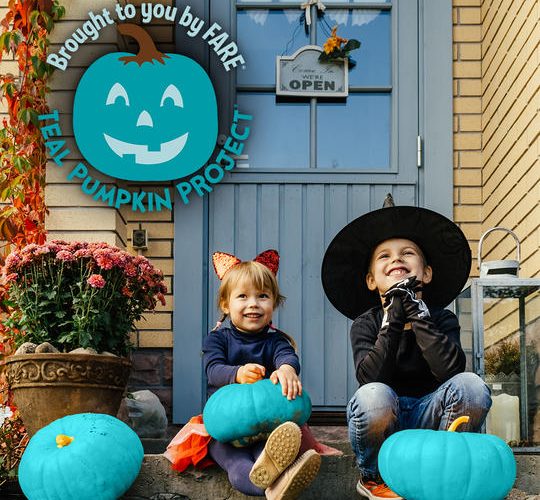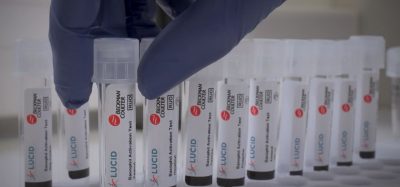Why non-food treats should matter to food industry players
- Like
- Digg
- Del
- Tumblr
- VKontakte
- Buffer
- Love This
- Odnoklassniki
- Meneame
- Blogger
- Amazon
- Yahoo Mail
- Gmail
- AOL
- Newsvine
- HackerNews
- Evernote
- MySpace
- Mail.ru
- Viadeo
- Line
- Comments
- Yummly
- SMS
- Viber
- Telegram
- Subscribe
- Skype
- Facebook Messenger
- Kakao
- LiveJournal
- Yammer
- Edgar
- Fintel
- Mix
- Instapaper
- Copy Link
Posted: 28 October 2024 | Sung Poblete | No comments yet
Dr Sung Poblete highlights the vital role of the Teal Pumpkin Project in fostering inclusivity for food allergy families during Halloween and its wider implications for the food industry.


Food anchors our human experiences—it is often the backdrop of cherished memories. Holidays, celebrations and significant life events almost always include food. When parents think about what memories they hope to create for their families, much of that planning will include food. Halloween is no exception.
Let me set the stage because it is likely that those who are not part of the food allergy community may not have thought about Halloween in the way that we hear about it at FARE (Food Allergy Research & Education), a leading food allergy nonprofit.
Think about your own fondest Halloween memories; maybe those include school parties or pumpkin patches. Perhaps you toasted pumpkin seeds after carving that year’s porch pumpkin, or maybe you remember those crisp nights in costume, going from house to house to collect as much candy as possible, heading home to dump out those treats, letting your parents check them, and then diving in headfirst… so many sugar-soaked memories to choose from.
And maybe some of those memories become part of your dream for your own children or children that you care for.
For some parents, though, that dreaming is interrupted by reality. Halloween (and other holidays) may suddenly look different when your family circle includes one of the more than 5.6 million children in the US alone with the disease of food allergy, and you realise that many traditional Halloween treats contain one or more common food allergens (think milk, peanuts, tree nuts, soy, wheat, and even sesame).
FARE recently asked our community to share some of their Halloween experiences as part of an informal poll distributed through social media.
One food allergy caregiver shared that, “[the] first Halloween was hard. When he was old enough to be excited but also unable to eat the candies he had worked so hard to collect, he became upset.”
Another said, “It only takes one fast three-year-old hand grabbing a snack off a table, something that should be harmless for most, to turn a fun neighbourhood party into a medical emergency.”
And another said, “When my son was first diagnosed with food allergies, I cried and cried, mourning the normal childhood activities that he would surely be deprived of, like trick-or-treating. I have since learned that he can participate in these activities, but in our own way.”
Enter the Teal Pumpkin Project.
More than 10 years ago, a mum in East Tennessee and parents from her area food allergy support group started what is now a movement for inclusivity for food allergy kids during Halloween called the Teal Pumpkin Project. The idea was simple and elegant—encourage families in your neighbourhood to offer non-food treats, small toys, stickers, glow sticks, temporary tattoos, plastic rings— that sort of thing.
And then leave the burden of disclosure with the adults, not the food allergy child—display a teal-coloured pumpkin on the porch or as a sign in the window. At an event like a trunk-or-treat, offer non-food goodies in a teal pumpkin basket.
That teal pumpkin is a beacon for parents and children, signalling that they can be included in the fun. It’s a simple, empowering way to promote inclusion and safety.
FARE’s Teal Pumpkin Project
Not long after the Teal Pumpkin Project began, FARE took it on to help drive that project into a movement for inclusivity for food allergy families during Halloween celebrations. FARE added an online map where families can pin their location so that those wishing to participate can identify their homes or events as providing non-food treats. That way, parents can see what may be available in their community ahead of time, set the right expectations with their children, and, where possible, even plan their neighbourhood route.
Today, for tens of thousands of participants, the Teal Pumpkin Project is woven into the fabric of Halloween, becoming part of the core memories of children in the US and expanding into countries around the world. A community-led, food allergy mum-originated, simple yet powerful movement is gaining momentum as we (FARE and the food allergy community) raise awareness of food allergy and its impacts.
Families tell us stories like this: “Neighbours often have a non-food treat available… We are so lucky to be part of a community that includes children with food allergies and hope for all children to have these normal childhood experiences.”
Why the Teal Pumpkin Project should matter to the food industry
If you have got this far reading the article, you may be saying to yourself, that’s a nice story, but why should I (professionally) care? I am part of the food industry, and you are talking about the importance of offering non-food items during a one-day holiday.
Here’s why.
Using US figures, about one in 10 adults and one in 13 children have food allergies. That’s more than 33 million people in the US alone, and the number is rising. In the US, food allergy is a silent public health epidemic. In the UK, recently published data shows that food allergy has doubled over the past decade. While the incidence of food allergies is lower in the UK than in the US, that is a troubling trend.
This means that the ultimate consumers of food industry products include a heavy and growing distribution of food allergy patients.
In 2020, FARE, along with other organisations, published an analysis of food allergy patients as consumers. The research found that the food allergy community makes up a large, underserved market comprising half a billion people worldwide, about 85 million of whom are in the US (defined by those who avoid allergens when shopping for food and beverages).
From the report: “Since food safety is vitally important to allergen-avoidant consumers, about two-thirds are loyal to certain products that they trust. Finding a safe product can be time-consuming and stressful, so once those shoppers have found one, they tend to buy it repeatedly. However, nearly a third of surveyed consumers say they regularly look for new products that are safe, perhaps indicating that many are not satisfied with the products on the shelves today.”
It does not take a market research study to know that the first step to accessing a consumer group is understanding it, learning its behaviours and priorities, so that you can create your products to meet that consumer where they are.
As the CEO of FARE, as a food allergy patient, as a clinician, I want the food industry to know our community. Because when you know this community as a consumer group, and you understand what we need and how we need it, when there is pervasive, broad awareness of food allergy as a disease, when product development, packaging, and marketing all understand what we’re looking for – how we spend more time reading labels than most consumers – how we are diligent and vigilant as we work to keep ourselves safe from an exposure—when you have that embedded in your processes, I believe the outcome is better products, better labelling, better ingredients, more information, and informed products that are developed with this community in mind.
And so, I came here to tell you a story about the Teal Pumpkin Project, and hopefully, now you know us a little better.
About the author


Dr Sung Poblete, PhD, RN, is CEO of FARE (Food Allergy Research & Education), joining the organisation in May 2022 from Stand Up To Cancer (SU2C) where she served as Chief Executive Officer since 2011. She has an extensive and varied background, receiving Bachelor and Master of Science degrees, as well as a PhD in nursing, from Rutgers, The State University of New Jersey. In 2016, Sung was inducted into Rutgers Hall of Distinguished Alumni, joining a select group of more than 200 honourees across Rutgers’ 256-year history who have devoted time and energy to the greater good of society.









